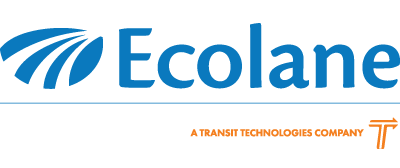Implementing new transit software for an agency can be a difficult adjustment for all involved – from supervisors to dispatchers to executives alike. The ability to transition smoothly, however, will be most dependent on how fast an agency’s drivers are able (or willing) to adapt.
How can an agency effectively introduce its drivers to new software technology to minimize pushback and maximize all that a new software has to offer? Here are the things that an agency can do to ensure a smooth transition and a successful implementation when it comes to its drivers:
Start Early
Though drivers may not be involved in the procurement process, it’s important to educate them and get their buy-in as early as possible in the process. They key is not to wait until right before the “go-live” to start training, holding meetings, and building awareness. The more resistance from the drivers that you receive makes for a rougher transition period, and this usually occurs when trying to get them to rush into adopting a drastic change. By helping them understand why you are making this change from the very beginning, you can minimize resistance and pushback and allow them to go at a more manageable pace. Something else that agencies can do to ensure a smoother transition is enlisting drivers in leadership positions; whether that’s categorized by seniority, a formal position, or even a union steward. If an agency can get these leaders behind the new technology early in the process, others in the department that look up to them will be more willing to get behind the new technology, too.Emphasize the Benefits for the Driver
A new transit software benefits the entire organization; that’s why most agencies decide to make the switch. Those who aren’t decision-makers in the organization, drivers especially, don’t always see that, however. By emphasizing the ways that the new technology actually benefits the driver in their daily duties, you can get drivers personally invested and excited about the change. Remember: the less resistance internally, the smoother the transition goes. Here are some of the benefits that should be highlighted for drivers:
- With new software capabilities, manual paperwork is a thing of the past. This makes a driver’s job much easier because they don’t have to spend time filling out their daily paperwork by hand.
- New technology can actually offer drivers more protection. With real-time capabilities, exact location, pick-up, and drop-off times are accurately recorded, leaving no doubt if a pick-up or drop-off actually occurred if a passenger ever has a dispute or complaint.
- With turn-by-turn instructions, navigation is made much simpler for drivers so they can effectively do their job daily. Additionally, new software can constantly reroute and update itineraries when problems arise or changes occur to keep drivers caught up. This means a driver no longer depends on instructions from a dispatcher, eliminating lag-time or any confusion.
Address Customer Service Concerns
Drivers are very passionate about the care of their passengers, as they develop long-term relationships with all of them. With the introduction of new technology, this also means that processes have to change. Drivers become concerned because they are used to providing for their passengers in a specific way and are less likely to support new changes if they feel it will negatively affect them or their passengers. By letting your drivers know that any changes made aren’t meant to make things worse and emphasizing that this change is actually meant to help drivers continue to give their passengers high-level, consistent service, any unease can be put to rest. It’s important to make sure that drivers understand the overall goals of the project and address how it directly affects them (and their passengers) during the education process.
For an agency, great decisions involving technology and scheduling mean nothing if the drivers don’t want to execute upon them. That’s why it’s so important to gain the necessary support and buy-in from these employees, as new technology can actually make their lives on the road easier day to day and improve overall agency operations. By recognizing that the adoption of a new technology will change the way that a driver interacts on a daily basis and by properly addressing concerns and educating employees early on, resistance can be eliminated and an implementation will be successful.
About the Author

Ecolane
Read Ecolane's blog articles for perspective, opinion and information on transit and paratransit issues.

